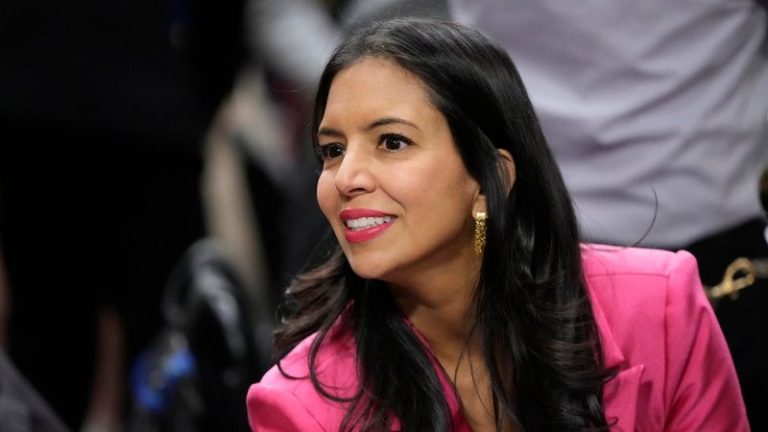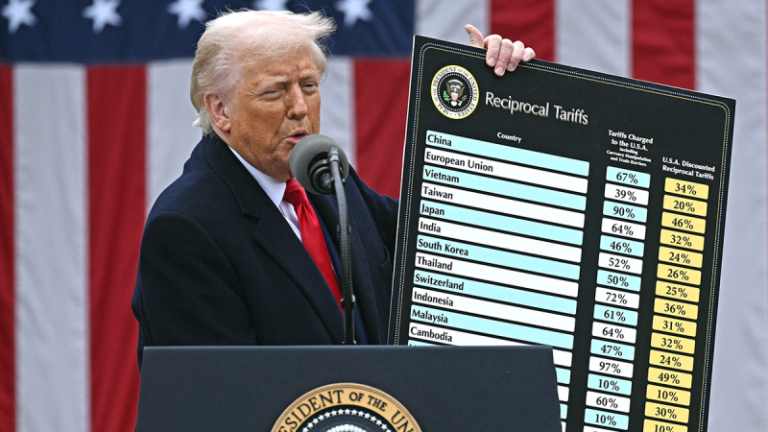I couldn’t believe my ears when I heard my friend and colleague Calley Means, co-founder of TrueMed and an adviser to Health and Human Services Secretary Robert Kennedy, being booed, laughed at and shouted down at the Politico Health Care Summit this week.
Apparently, that room full of health care lobbyists and partisan critics didn’t want to hear the truth: American health policy in its current form is an absolute and utter failure. The Department of Health and Human Services (HHS), the largest health bureaucracy in the world, needs an overhaul and it needs to happen fast.
The backlash Calley encountered Wednesday came just 24 hours after HHS began laying off 10,000 federal employees — including entrenched officials from agencies like the FDA, NIH, and CMS, who have presided over a stunning collapse in American health.
Shortly after Secretary Kennedy’s announcement of the restructuring, the former FDA Commissioner Dr. Robert Califf went on his LinkedIn page and stated ‘The FDA as we’ve known it is finished.’
Thank goodness it’s finished.
Decades of ineffectiveness have allowed our food and chemical corporations to inundate our food system with novel chemicals without third-party oversight or necessary safety studies.
Decades of outdated regulatory actions have let American companies poison us with ingredients they don’t use in other countries — like artificial food dyes that are linked to hyperactivity in children and cancer in animal studies.
Decades of poor nutritional standards have allowed infant formulas with the first ingredient — ‘corn syrup solids’ — a form of added refined sugar — to be given to newborn babies.
If our health authorities worked, we wouldn’t be the sickest developed country on Earth. We wouldn’t have exploding rates of obesity, infertility, and depression. The facts speak louder than the boos.
We need a total overhaul in how our regulatory bodies operate. We need to replace old thinking. We need new personnel who aren’t riddled with conflicts of interest. We need gold-star science that will get to the root cause of why we are in this predicament and how to solve it.
Our government has miserably failed to protect human health and there are countless examples of that — but now with President Donald Trump and Secretary Kennedy’s bold vision to reverse chronic disease, we have a turning point in history that we’ve never had before.
What Calley said at the summit wasn’t complicated: the people who helped create this crisis shouldn’t be the ones running the response. And yet, when he pointed out that America has ‘the sickest children in the developed world’ — and that laughing off reform in the face of that reality is disgraceful — the room turned hostile.
He argued that Secretary Kennedy is doing exactly what voters — particularly MAHA moms like me — asked for: removing entrenched bureaucrats who labeled independent experts as quacks, punished dissent, and brushed aside soaring chronic disease rates– ignoring the fact that food is medicine. To do otherwise, as Calley put it, is ‘to tell the MAHA moms that their votes and voices are not legitimate.’
People voted for change. Not for minor tweaks — for structural disruption. And that’s why the MAHA moms are done being laughed at. I understand the outrage. But I also understand what’s at stake.
If our health authorities worked, we wouldn’t be the sickest developed country on Earth. We wouldn’t have exploding rates of obesity, infertility, and depression. The facts speak louder than the boos.
And let’s be clear: this isn’t the first time reform has made the elite uncomfortable. Calley is a warrior like I’ve never seen before. He is doing what real reformers always do — facing down institutions that protect themselves at all costs. And he has an army of MAHA moms behind him.
I’m one of them. As a longtime food activist and founder of the Food Babe movement, I’ve spent over a decade challenging the very same health establishment now being reformed. I’ve spoken directly with the MAHA moms in and and outside the White House driving this effort — women who’ve watched their kids suffer from chronic illness, only to be gaslit by the very agencies meant to protect them.
These aren’t fringe voices. They’re citizens demanding accountability, transparency, and a return to common sense in public health. I’m proud to stand with them.
I’ve traveled all over the country with Calley, in a grassroots effort to fix what the food industry has done to us — testifying in various states that are looking to reform antiquated policies that allow harmful chemicals in our food and keep Americans sick.
This moment isn’t about optics. It’s about outcomes — whether American children are healthier in five years. Whether families feel seen and served by public health institutions. Whether the government finally begins to prioritize prevention over pharmaceutical profits.
Calley should not apologize for prioritizing America’s health over bureaucratic egos. He shouldn’t back down because insiders are uncomfortable. He is part of a team building a leaner, more transparent and reputable HHS. And if telling that truth gets him booed again, I have a feeling he’ll take the mic every time.


